In this article, you’ll discover the best tripod for macro photography options out there. This will help you figure out which macro tripod is best for you.
[Note: ExpertPhotography is supported by readers. Product links on ExpertPhotography are referral links. If you use one of these and buy something, we make a little bit of money. Need more info? See how it all works here.]
How to Choose a Tripod for Macro Photography
When picking the best macro tripod, you’ll want to consider a few key features.
Weight and Stability
Tripods range from ultra-light to very heavy. As a macro photographer, you’re going to want a tripod on the lighter side. Macro photographers often do a lot of trekking in the field to find the perfect subject. You don’t want to get stuck with a dead weight on your back.
One way to keep the weight down is by purchasing a carbon fiber tripod. Carbon fiber is very light, but also quite stable. It’s a favorite among professional photographers. Plastic is also light, but very prone to breakage. Wood tripods are stable but heavy. Avoid them if you can. Aluminum is a good compromise option. It’s stable, and it’s not too heavy. I wouldn’t want to hike all day with an aluminum tripod on my back. But the weight is manageable for short trips. If you’re a studio macro photographer, feel free to go for a heavy aluminum tripod! These will cost less. If you’re looking for a bargain and don’t plan on taking your tripod into the field, then this might be the way to go.
Flexibility
For macro photographers, tripod flexibility is key. Imagine that you’re shooting a subject on the forest floor. You need to be able to get your tripod low enough that your camera is on a level with the subject.
On many tripods, that would be impossible. You should choose a tripod that maximizes your flexibility. Tripods with a center column tend to be less flexible. The center column prevents them from getting low to the ground. A few brands offer a neat feature: a removable center column. This lets you place your camera beneath the tripod legs or off to the side of the tripod. You can also increase your flexibility by choosing a good tripod head. I recommend ball heads. These are easy to maneuver into position and easy to adjust. For the precision-focused macro photographer, a pan and tilt head might be a better choice. These are slower, but allow you to adjust each axis independently so you can consistently nail your point of focus.
Price
The best tripods for DSLR macro photography come with a downside. They cost a lot of money. If you want a lightweight, flexible, stable carbon fiber tripod, you’re going to pay a hefty sum. Do you want an ultra-high quality macro photography tripod? Or are you willing to compromise on certain features, such as weight? It’s your choice, based on your needs and budget. That’s why, in this article, I give you a mix of options, including budget tripods, portable tripods, and professional-grade tripods.
The Best Tripods for Macro Photography: Our Picks
Here are the best tripods for DSLR macro photography in 2019.
1. The Vanguard Alta Pro 263AB 100 Aluminum Tripod (With SBH-100 Ball Head)
The Vanguard Alta Pro is a favorite tripod among macro photographers, and for good reason. First and foremost, it’s flexible. The Vanguard Alta Pro allows you to shoot at angles that would normally be impossible, courtesy of its multi-angle central column system. This lets you mount the central column onto the tripod legs at unusual angles, and guarantees you a nearly full range of motion. Plus, when the central column is positioned correctly, the legs flatten out for ultra-low macro photography. While the Vanguard is made of aluminum, it’s not too hefty. At 5.4 pounds (2.4 kgs), you shouldn’t have much trouble using it on short journeys in the field. The Vanguard is also quite stable. And it’s equipped with rubber feet that turn into spikes. You can feel comfortable working on wet or otherwise difficult terrain. As a bonus, the Vanguard Alta Pro comes with a decent-quality ballhead. The SBH-100 is good for making those last-second adjustments to your compositions. And did I mention the price? The Alta Pro 263AB 100 clocks in at just over $100 USD–a bargain for such a high-quality option. Pros:
Ultra-flexible Very stable, with rubber and spiked feet Inexpensive
Cons:
Not the lightest tripod out there
2. Benro Mach3 2 Series Carbon Fiber Tripod
The Benro Mach3 2 Series tripod is a great option for macro photographers who prize weight over flexibility. The Benro Mach3 is really, really light. At just 3.1 pounds, you’ll be able to work all day and hardly notice the weight. That’s the benefit of carbon fiber. As for flexibility, the Benro Mach3 does well, but nothing to write home about. While the tripod doesn’t have a center column, the tripod’s minimum height is 15.2 inches. This is decent but is less than ideal for macro photographers looking for ultimate flexibility. In terms of stability, the Benro Mach3 performs well. While not quite as rock-solid as some of the highest-quality landscape tripods, the Benro still manages to hold its own. It’s a good option for those who want sharp images but aren’t ready to fork over huge sums of money. Note that the Benro Mach3 doesn’t come with a tripod head–you’ll need to purchase this separately. Pros:
Lightweight Carbon fiber Reasonably priced
Cons:
Minimum height is above ground-level
3. The Benro TAD27C Series 2 Adventure Carbon Fiber Tripod
The Benro Series 2 Adventure tripod has two main strengths. It’s light, and it’s stable. First, the weight: At just 3 pounds, the Benro Series 2 Adventure is perfect for extensive use in the field. You can carry it all day and not feel the weight, thanks to the carbon fiber body. Plus, the carbon fiber makes for an ultra-stable tripod. The Benro Series 2 performs well, no matter the conditions. It can carry up to 26.5 pounds, which is more than I’ve ever needed. The biggest drawback of the Benro Series 2 is its minimum height. You can adjust it to just above 15 inches–which is low, but not quite as low as the most demanding macro photographers would like. So you might want to avoid this tripod if you require extreme flexibility. On the other hand, for those who appreciate stability and a lightweight body, the Benro Series 2 might be the way to go. Pros:
Very stable Extremely lightweight
Cons:
High minimum height Doesn’t include head
4. Bonfoto B690A Aluminum Tripod (With Ball Head)
The Bonfoto B690A aluminum tripod offers a lot of useful features–all for a fantastically low price. Is it going to be rock solid in windy conditions? Not really. But it’s rated at 17 lbs (7.7 kg). This means you can use a pretty hefty camera without too much trouble. And despite an impressive maximum height of 55 in (139.7 cm), the Bonfoto folds up nicely. This makes it perfect for travel and on-the-move shooting. It’s also lightweight, clocking at 2.6 lbs (1.18 kg), so you don’t have to worry about taking it with you on long treks. Plus, the Bonfoto comes with a nice bonus for macro photographers. The center column is reversible, which allows you to get your camera into all sorts of low angles. That way, you don’t have to worry about being constrained by a tripod. With the Bonfoto B690A, the sky is the limit! Pros:
Amazing price Very flexible Very lightweight Travel-ready
Cons:
Not as stable as a high-end tripod
5. ZOMEi Z669C Portable Carbon Tripod (With Ball Head)
The ZOMEi Z669C portable carbon tripod is much like the Bonfoto: The price is amazing, it’s ultra-lightweight, and it works extremely well as a travel tripod. But let’s dig into the details. First, the carbon fiber legs keep this tripod’s weight to a manageable level: 3.3 lbs (1.5 kg). While not quite as light as the Bonfoto, you won’t notice much of a difference in the field. The tripod is also collapsible, getting you down to 15 in (38.1 cm) for increased portability. Second, the ZOMEi Z669C is ultra-flexible. You can mount your camera and macro lens on the underside of the tripod. This allows you to get into those angles you normally need to handhold. A cool addition is a tripod-to-monopod conversion. You can turn your ZOMEi Z669C into a nice monopod. Note that, like the Bonfoto, the ZOMEi isn’t going to give you the most stable base around. But for the price, it does an amazing job. Pros:
Great price Flexible for macro shooting Lightweight and portable Converts to a monopod
Cons:
Could be more stable
6. Manfrotto 055 Aluminum 3-Section Tripod
Manfrotto has a good reputation among tripod enthusiasts, and the Manfrotto 055 aluminum tripod doesn’t disappoint. The Manfrotto 055 is light at 5.5 lbs (2.5 kg). This isn’t as light as some other tripods on this list, but shouldn’t be too much trouble in the field. The Manfrotto is rated as able to carry 19.8 lbs (9 kg) of camera gear. This is certainly enough for the casual macro photographer. It should also be able to handle some less-common accessories (such as a macro-focusing rail). It’s also nice and sturdy, as long as you don’t extend the center column too much. The best thing about the Manfrotto 055 is its center column and flexible legs. The legs widen until the camera is nearly flat against the ground, and the center column pops out. This allows you to position it at plenty of interesting angles. For the slightly more serious macro photographer, the Manfrotto 055 is a great option. Pros:
Sturdy Flexible legs and center column
Cons:
Heavier than other tripods on this list
7. Benro GoPlus Travel S1 Aluminum 4 Section Tripod
The Benro GoPlus Travel S1 tripod is billed as a travel tripod. It’ll do the job for your macro photography too. The legs are carbon fiber, which is always a good sign. Carbon fiber tends to be both lightweight and stable, which is why the Benro GoPlus is in the area of 3.5 lbs (1.5 kg) and is very solid. With the Benro, you don’t have to worry about flexibility. The tripod legs go flat and the center column pops out, allowing you to position your camera at any angle you can imagine. This is perfect for the macro photographer who likes to capture more experimental shots but prefers to work with a tripod rather than handheld. The Benro GoPlus also lets you detach a leg to use as a monopod. This adds stability in the field without carrying the full tripod. Pros:
Stable Decently lightweight Extremely flexible Monopod option
Cons:
Price is good, but not great, especially compared to some of the other options on this list
8. Gitzo GT3533S Systematic Series 3 Carbon Tripod
The Gitzo GT3533S is uncompromising in every way. It’s ultra-sturdy. It’s extremely flexible. And it’s very expensive. In other words, with the Gitzo GT3533S, you get what you pay for. For the most serious macro photographers, it’ll be worth it. Let’s talk about its build. The Gitzo GT3533S is made from carbon fiber, which makes it a lightweight but sturdy option. At just 4.3 pounds, you can carry the Gitzo without worrying about getting tired. The carbon fiber legs ensure maximum stability, even in tough conditions, with up to 55 pounds of camera and lens gear mounted on top. The Gitzo GT3533S has no center column, which allows it to drop down to a minimum height of 3.5 inches. This is perfect for getting those low-angle shots that macro photographers love. This Gitzo doesn’t come with a head, but if you’re serious enough to purchase such a high-end tripod, you’ll undoubtedly want to choose your head separately. Pros:
Extremely sturdy Ultra-low minimum height Lightweight
Cons:
Price
Conclusion
You should now have a sense of the best tripods for DSLR macro photography out there. This will help you pick the best tripod for your photography needs. Why not check out our new post on the best travel tripod options next!
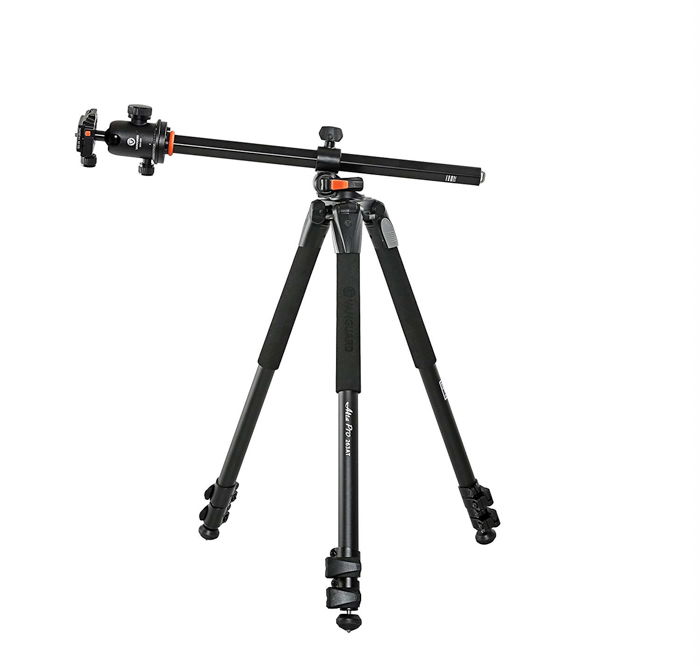

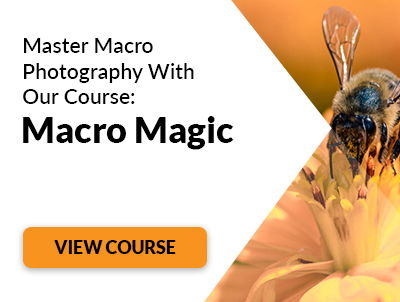

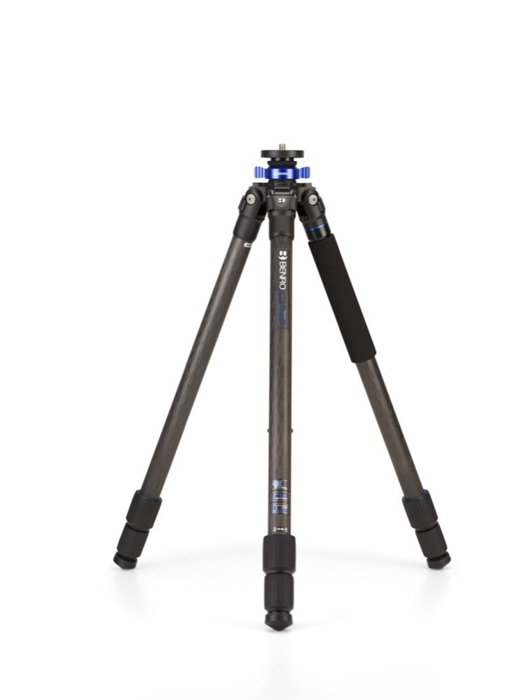
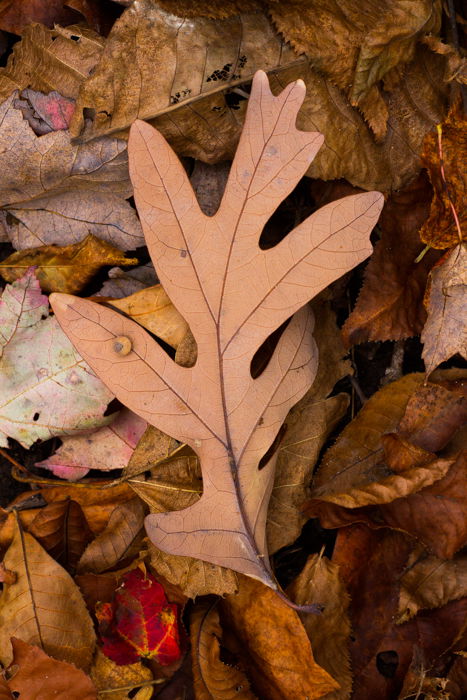
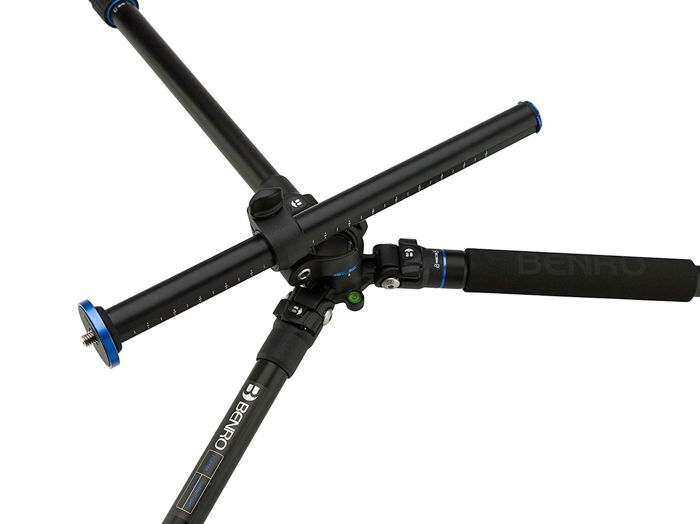

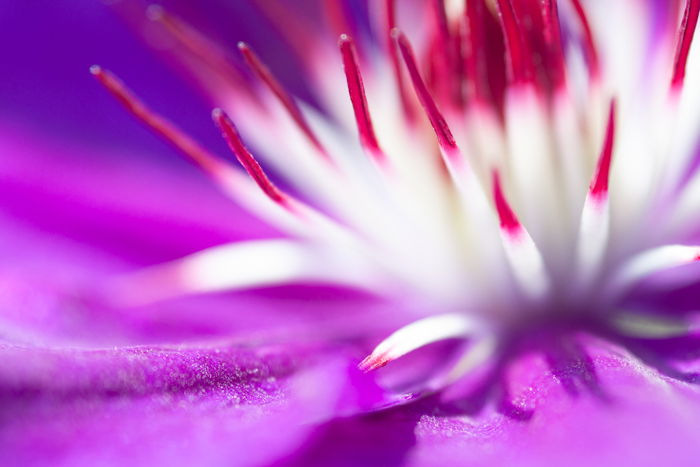
title: “8 Best Tripod For Macro Photography In 2023 Updated " ShowToc: true date: “2023-02-14” author: “John Truiolo”
In this article, you’ll discover the best tripod for macro photography options out there. This will help you figure out which macro tripod is best for you.
[Note: ExpertPhotography is supported by readers. Product links on ExpertPhotography are referral links. If you use one of these and buy something, we make a little bit of money. Need more info? See how it all works here.]
How to Choose a Tripod for Macro Photography
When picking the best macro tripod, you’ll want to consider a few key features.
Weight and Stability
Tripods range from ultra-light to very heavy. As a macro photographer, you’re going to want a tripod on the lighter side. Macro photographers often do a lot of trekking in the field to find the perfect subject. You don’t want to get stuck with a dead weight on your back.
One way to keep the weight down is by purchasing a carbon fiber tripod. Carbon fiber is very light, but also quite stable. It’s a favorite among professional photographers. Plastic is also light, but very prone to breakage. Wood tripods are stable but heavy. Avoid them if you can. Aluminum is a good compromise option. It’s stable, and it’s not too heavy. I wouldn’t want to hike all day with an aluminum tripod on my back. But the weight is manageable for short trips. If you’re a studio macro photographer, feel free to go for a heavy aluminum tripod! These will cost less. If you’re looking for a bargain and don’t plan on taking your tripod into the field, then this might be the way to go.
Flexibility
For macro photographers, tripod flexibility is key. Imagine that you’re shooting a subject on the forest floor. You need to be able to get your tripod low enough that your camera is on a level with the subject.
On many tripods, that would be impossible. You should choose a tripod that maximizes your flexibility. Tripods with a center column tend to be less flexible. The center column prevents them from getting low to the ground. A few brands offer a neat feature: a removable center column. This lets you place your camera beneath the tripod legs or off to the side of the tripod. You can also increase your flexibility by choosing a good tripod head. I recommend ball heads. These are easy to maneuver into position and easy to adjust. For the precision-focused macro photographer, a pan and tilt head might be a better choice. These are slower, but allow you to adjust each axis independently so you can consistently nail your point of focus.
Price
The best tripods for DSLR macro photography come with a downside. They cost a lot of money. If you want a lightweight, flexible, stable carbon fiber tripod, you’re going to pay a hefty sum. Do you want an ultra-high quality macro photography tripod? Or are you willing to compromise on certain features, such as weight? It’s your choice, based on your needs and budget. That’s why, in this article, I give you a mix of options, including budget tripods, portable tripods, and professional-grade tripods.
The Best Tripods for Macro Photography: Our Picks
Here are the best tripods for DSLR macro photography in 2019.
1. The Vanguard Alta Pro 263AB 100 Aluminum Tripod (With SBH-100 Ball Head)
The Vanguard Alta Pro is a favorite tripod among macro photographers, and for good reason. First and foremost, it’s flexible. The Vanguard Alta Pro allows you to shoot at angles that would normally be impossible, courtesy of its multi-angle central column system. This lets you mount the central column onto the tripod legs at unusual angles, and guarantees you a nearly full range of motion. Plus, when the central column is positioned correctly, the legs flatten out for ultra-low macro photography. While the Vanguard is made of aluminum, it’s not too hefty. At 5.4 pounds (2.4 kgs), you shouldn’t have much trouble using it on short journeys in the field. The Vanguard is also quite stable. And it’s equipped with rubber feet that turn into spikes. You can feel comfortable working on wet or otherwise difficult terrain. As a bonus, the Vanguard Alta Pro comes with a decent-quality ballhead. The SBH-100 is good for making those last-second adjustments to your compositions. And did I mention the price? The Alta Pro 263AB 100 clocks in at just over $100 USD–a bargain for such a high-quality option. Pros:
Ultra-flexible Very stable, with rubber and spiked feet Inexpensive
Cons:
Not the lightest tripod out there
2. Benro Mach3 2 Series Carbon Fiber Tripod
The Benro Mach3 2 Series tripod is a great option for macro photographers who prize weight over flexibility. The Benro Mach3 is really, really light. At just 3.1 pounds, you’ll be able to work all day and hardly notice the weight. That’s the benefit of carbon fiber. As for flexibility, the Benro Mach3 does well, but nothing to write home about. While the tripod doesn’t have a center column, the tripod’s minimum height is 15.2 inches. This is decent but is less than ideal for macro photographers looking for ultimate flexibility. In terms of stability, the Benro Mach3 performs well. While not quite as rock-solid as some of the highest-quality landscape tripods, the Benro still manages to hold its own. It’s a good option for those who want sharp images but aren’t ready to fork over huge sums of money. Note that the Benro Mach3 doesn’t come with a tripod head–you’ll need to purchase this separately. Pros:
Lightweight Carbon fiber Reasonably priced
Cons:
Minimum height is above ground-level
3. The Benro TAD27C Series 2 Adventure Carbon Fiber Tripod
The Benro Series 2 Adventure tripod has two main strengths. It’s light, and it’s stable. First, the weight: At just 3 pounds, the Benro Series 2 Adventure is perfect for extensive use in the field. You can carry it all day and not feel the weight, thanks to the carbon fiber body. Plus, the carbon fiber makes for an ultra-stable tripod. The Benro Series 2 performs well, no matter the conditions. It can carry up to 26.5 pounds, which is more than I’ve ever needed. The biggest drawback of the Benro Series 2 is its minimum height. You can adjust it to just above 15 inches–which is low, but not quite as low as the most demanding macro photographers would like. So you might want to avoid this tripod if you require extreme flexibility. On the other hand, for those who appreciate stability and a lightweight body, the Benro Series 2 might be the way to go. Pros:
Very stable Extremely lightweight
Cons:
High minimum height Doesn’t include head
4. Bonfoto B690A Aluminum Tripod (With Ball Head)
The Bonfoto B690A aluminum tripod offers a lot of useful features–all for a fantastically low price. Is it going to be rock solid in windy conditions? Not really. But it’s rated at 17 lbs (7.7 kg). This means you can use a pretty hefty camera without too much trouble. And despite an impressive maximum height of 55 in (139.7 cm), the Bonfoto folds up nicely. This makes it perfect for travel and on-the-move shooting. It’s also lightweight, clocking at 2.6 lbs (1.18 kg), so you don’t have to worry about taking it with you on long treks. Plus, the Bonfoto comes with a nice bonus for macro photographers. The center column is reversible, which allows you to get your camera into all sorts of low angles. That way, you don’t have to worry about being constrained by a tripod. With the Bonfoto B690A, the sky is the limit! Pros:
Amazing price Very flexible Very lightweight Travel-ready
Cons:
Not as stable as a high-end tripod
5. ZOMEi Z669C Portable Carbon Tripod (With Ball Head)
The ZOMEi Z669C portable carbon tripod is much like the Bonfoto: The price is amazing, it’s ultra-lightweight, and it works extremely well as a travel tripod. But let’s dig into the details. First, the carbon fiber legs keep this tripod’s weight to a manageable level: 3.3 lbs (1.5 kg). While not quite as light as the Bonfoto, you won’t notice much of a difference in the field. The tripod is also collapsible, getting you down to 15 in (38.1 cm) for increased portability. Second, the ZOMEi Z669C is ultra-flexible. You can mount your camera and macro lens on the underside of the tripod. This allows you to get into those angles you normally need to handhold. A cool addition is a tripod-to-monopod conversion. You can turn your ZOMEi Z669C into a nice monopod. Note that, like the Bonfoto, the ZOMEi isn’t going to give you the most stable base around. But for the price, it does an amazing job. Pros:
Great price Flexible for macro shooting Lightweight and portable Converts to a monopod
Cons:
Could be more stable
6. Manfrotto 055 Aluminum 3-Section Tripod
Manfrotto has a good reputation among tripod enthusiasts, and the Manfrotto 055 aluminum tripod doesn’t disappoint. The Manfrotto 055 is light at 5.5 lbs (2.5 kg). This isn’t as light as some other tripods on this list, but shouldn’t be too much trouble in the field. The Manfrotto is rated as able to carry 19.8 lbs (9 kg) of camera gear. This is certainly enough for the casual macro photographer. It should also be able to handle some less-common accessories (such as a macro-focusing rail). It’s also nice and sturdy, as long as you don’t extend the center column too much. The best thing about the Manfrotto 055 is its center column and flexible legs. The legs widen until the camera is nearly flat against the ground, and the center column pops out. This allows you to position it at plenty of interesting angles. For the slightly more serious macro photographer, the Manfrotto 055 is a great option. Pros:
Sturdy Flexible legs and center column
Cons:
Heavier than other tripods on this list
7. Benro GoPlus Travel S1 Aluminum 4 Section Tripod
The Benro GoPlus Travel S1 tripod is billed as a travel tripod. It’ll do the job for your macro photography too. The legs are carbon fiber, which is always a good sign. Carbon fiber tends to be both lightweight and stable, which is why the Benro GoPlus is in the area of 3.5 lbs (1.5 kg) and is very solid. With the Benro, you don’t have to worry about flexibility. The tripod legs go flat and the center column pops out, allowing you to position your camera at any angle you can imagine. This is perfect for the macro photographer who likes to capture more experimental shots but prefers to work with a tripod rather than handheld. The Benro GoPlus also lets you detach a leg to use as a monopod. This adds stability in the field without carrying the full tripod. Pros:
Stable Decently lightweight Extremely flexible Monopod option
Cons:
Price is good, but not great, especially compared to some of the other options on this list
8. Gitzo GT3533S Systematic Series 3 Carbon Tripod
The Gitzo GT3533S is uncompromising in every way. It’s ultra-sturdy. It’s extremely flexible. And it’s very expensive. In other words, with the Gitzo GT3533S, you get what you pay for. For the most serious macro photographers, it’ll be worth it. Let’s talk about its build. The Gitzo GT3533S is made from carbon fiber, which makes it a lightweight but sturdy option. At just 4.3 pounds, you can carry the Gitzo without worrying about getting tired. The carbon fiber legs ensure maximum stability, even in tough conditions, with up to 55 pounds of camera and lens gear mounted on top. The Gitzo GT3533S has no center column, which allows it to drop down to a minimum height of 3.5 inches. This is perfect for getting those low-angle shots that macro photographers love. This Gitzo doesn’t come with a head, but if you’re serious enough to purchase such a high-end tripod, you’ll undoubtedly want to choose your head separately. Pros:
Extremely sturdy Ultra-low minimum height Lightweight
Cons:
Price
Conclusion
You should now have a sense of the best tripods for DSLR macro photography out there. This will help you pick the best tripod for your photography needs. Why not check out our new post on the best travel tripod options next!








